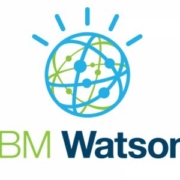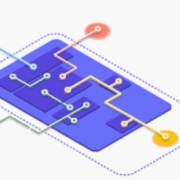How Use Cases Help Sell Digital
Business Intelligence, Innovative Ideas“Digitally determined” organizations no longer ask if something is possible. They assume it is. Corporate leaders identify what they wish to achieve. Those goals are broken into use cases. The organization then works backward to determine what technologies are needed. IT suppliers need to be on board with these use cases. Many suppliers say they put customers first and that they work backward from business goals to create their products.
But we’ve spoken with and seen too many instances where their sales representatives are focused on products, not the goals of their clients. Some of these reps struggle to connect task-specific applications to use cases and strategic goals. Some of us at IDC have been directly involved in training designed to help IT suppliers improve the positioning of products and services in relation to high-level goals and divisional or departmental use cases.
Use Cases and New Revenue
The long-standing adage that ICT markets expand around twice as fast as GDP continues to apply to Europe. Overall ICT spending in Europe is forecast to rise by 3.0% in 2019 (excluding Russia). In contrast, spending on 3rd Platform technologies (cloud, mobility, Big Data, and social) and innovation accelerators is projected to soar by around 15% from 2019–2022. This is because 3rd Platform technologies and innovation accelerators are crucial to digitalization, autonomic computing, and operational optimization. They are essential for staking out new business models built on data, platforms, and ecosystems — something European CEOs are increasingly pressured to include in corporate visions and plans.

Digital transformation (DX) use cases (outlined in our DX spending guide taxonomy) include 3rd Platform technologies and innovation accelerators, including Internet of Things (IoT) solutions, augmented reality, and blockchain. Use cases enable C-level executives to clearly describe the uses of multiple technologies to fulfill clear cross-functional business needs. Consider customer experience (CX): While it manifests differently in different industries, it often includes combinations of IoT, artificial intelligence, digital signage, social media, cloud, Big Data, real-time analytics, mobility solutions, and customer relationship management tools. CX may use hyperscale or multicloud platforms to support data and omni-channel integration.

Tap the Shaft in Priorities and Influence
The business goals that drive use case development are closely related to spending decisions. For example, COOs usually spearhead the use of technology to improve business processes. CX officers or CMOs are generally charged with developing customer interfaces and optimizing CX. CDOs, CEOs, or special projects teams drive new business models and ecosystem development.
These leaders will work with the CIO to ensure that infrastructure, networks, application management environments, API architectures, and back-office applications support digital use cases. However, when it comes to DX-related projects, the CIO is often in a supporting role. IDC’s 2018 Executive Sentiment Survey for Europe shows that 63% of the budget for projects related to DX comes from lines of business (LOBs) or dedicated DX budgets.
This is an important reason why platforms are on the rise. CIOs are moving to create foundations for divisions and departments that encourage common tool and systems use — and thus greater integration. Hyperscale and multicloud platforms are increasingly viewed as central to this transformation because they enable agile IT architectures, business and partner ecosystems, and IT and LOB empowerment. But integration remains a challenge. Despite the rapid pace of investments in cutting-edge technologies, organizations continue to wrestle with legacy systems, overly hierarchical organizational structures, and change-resistant company cultures.
Other key trends are also in play. Skills shortages are increasing in IT and process automation. In manufacturing hubs like the Czech Republic, the need for skilled workers is particularly acute. Factories are deploying robotics to make up for a lack of skilled workers. Security also remains a top concern. Current and emerging digital threats (and strict regulations around privacy protection) filter every spending decision.
Connect with Clients
Use cases enable IT suppliers to speak about solutions in terms of their benefits, rather than just the details of the technology. Whether in 60-second pitches in an elevator, introductory emails, or white papers and project proposals, use cases can be valuable reference points for establishing business relationships.
When speaking with prospects and clients:
- Name a pain point and its impact. If it hits the mark, the prospect will likely tell you their issue. If you are wrong, the prospect will probably correct you. In either case, you are focused on them and learning about their challenges.
- Name the use case that relates to or solves the problem. If appropriate, elaborate on how a given use case might work and the core technologies involved. This is best done with a general example. If the use case is about intelligent fleet management and route planning, for example, point out how these tools can reduce idle time and maximize capacity. Note that a solution can be built using an IoT-based solution that connects to real-time analytics and AI tools, usually run from the cloud. It can be supplemented with augmented reality tools that accelerate package location and robots that can help with loading and unloading.
- Use a real case study to make your appeal. Building on the transportation example, the template for an appeal might read like this: “Our client piloted an intelligent fleet management solution in their home market. In addition to reducing total hours per driver, it reduced idle time through tracking and automated route planning. They are now rolling it out across four countries.”
- Include a call to action. If it’s an elevator pitch or an informal conversation, be brief. Ask for a short meeting — 15 minutes — to provide more details.
Final Thought: The New Paradigm
Use cases represent a paradigm shift in how people think of IT and how markets are evaluated. This is a key reason IDC invests in tracking and assessing related spending levels in our DX and other spending guides. Box and license counting will still be important for large-scale resource allocation and target setting. But use cases will be crucial for mid- and long-term product planning. Use cases tell us what organizations need technology for. They offer a clear view of strategic priorities. And, of course, they communicate business goals. Use cases are invaluable for starting discussions, positioning services, and building lasting partnerships with clients.
Contact Angela Vacca or Mark Yates to find out how use cases can help you understand the European market for DX (and other technology areas).
Looking for more DX use cases? Check out IDC’s DX Use Cases, SaaS, Intelligent ERP and Associated Technologies to learn about innovation at scale.
Senior Research Manager, European Industry Solutions, Customer Insights & Analysis











